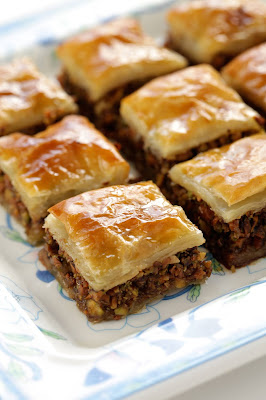Under the column are photos and lots of links including
videos AND restaurant links in Pittsburgh, Pennsylvania
videos AND restaurant links in Pittsburgh, Pennsylvania
An active Turkish organization exists in Pittsburgh:
Turkish Cultural Center Pittsburgh: https://www.ptaa.org/)
Facebook: https://www.facebook.com/TCCPenn/
-------------------------------------------------------------------------
A look at the
evolution of food in southwestern Pennsylvania –
MACEDONIANS: Part 6 – 3 The
Turks
The largest
number of ethnic Turks entered the US from 1900 and 1914. However the US
passed the Immigration Act of 1917, which
limited entries into the United States based on literacy and that halted some
immigration. The early Turks were male-dominated economic farmer and shepherd emigrants
from the lower socioeconomic classes; their main concern was to save enough
money and return home. The majority settled in urban areas and worked in the industrial sector, taking difficult and lower-paying jobs in leather factories, tanneries, the iron and steel sector, and the wire, railroad, and automobile industries.
Later, a large wave of Turkish Americans who
were more entrepreneurial came from 1960’s-1980 and
on. During the last 15-25 years, Turkish grocery stores, restaurants and craft
shops have increased in number. According
to different online sources there are 7 to 14 restaurants that serve Turkish
food in the Pittsburgh area.
BEVERAGE: Raki (the national drink) is a distilled
beverage made from different fruits usually grapes, figs, raisins and plums. Raki
is usually drunk with cold dishes like tomatoes, cucumber, lettuce salad and
seafood. Fish is also a favorite, especially mullet and mackerel. Due to the
aniseed it contains, raki changes color and becomes a milky white when water is
added and a glass of pure water to go with it gives a distinct pleasant taste.
Meze
platters are very popular in Turkey.
Meze are appetizers. I have decided to
dedicate this column to meze platter items which are also popular in the
original Macedonian Empire countries: Macedonia, Greece, Cyprus (I had meze in
Cyprus), Bulgaria, Albania, Serbia, Kosovo, etc. Meze or
mezze are a compendium of all Macedonian foods. I think you will find them very interesting. I
had a semi-Americanized meze platter party last year and everyone was anxious
to try the dishes.
Turkish meze often
consist of Beyaz Peynir (white cheese), Kavun (sliced ripe melon), Acili Ezme (hot pepper paste often with walnuts), Havdari (thick strained yogurt), Patlıcan Salatası (cold eggplant salad), Baba Ghanouse (mashed eggplant mixed with seasonings), Hummus (cooked, mashed chickpea dip), Kalamar (calamari or squid), Enginar (artichokes), Cacik (yogurt with cucumber and garlic), Dolma (vegetables like peppers or squash stuffed with rice, chopped mint, lemon juice, pepper, minced lamb) and Kofte (meatballs).
MORE MEZE
(MEZZE): Kibbeh (bulgur wheat,
chopped meat, and spices), Falafel (deep-fried ball or patty using
ground chickpeas, fava beans, or both), Halloumi cheese (usually sliced and grilled or fried), Souvlaki (bite
sized meat cubes, often
lamb, grilled on a skewer over
charcoal), Sarma (grape vine leaves, stuffed with rice, chopped
mint, lemon juice, pepper, minced lamb), Shanklish (cow's
milk or sheep's milk cheeses), Muhammara (a
hot pepper dip with ground walnuts, breadcrumbs and seasonings), Pastirma (seasoned,
air-dried cured beef meat), Tabbouleh (bulgur,
finely chopped parsley, mint, tomato, spring onion, with lemon juice, olive oil
and seasonings), Fattoush (salad made from several garden vegetables and
toasted or fried pieces of pita bread), artichoke salad, Olives, Shepherd
salad (Tomato, cucumber, pepper, parsley, onion or scallion) and Kisir (bulgur
rice, tomatoes, scallions, parsley, olive oil, red pepper paste).
Turkish photos
FOOD PHOTOS
ABOUT TURKISH AMERICANS FROM WIKI: http://en.wikipedia.org/wiki/Turkish_American
ABOUT TURKISH CUISINE FROM WIKI: http://en.wikipedia.org/wiki/Turkish cuisine
TURKISH BEVERAGES: http://www.allaboutturkey.com/icecekler.html
BUZZ FEED 21
FOODS YOU WILL WANT: http://www.buzzfeed.com/jeremybender/tantalizing-turkish-foods-youll-want-immediately
VIDEOS:
FOOD IN
ISTANBUL: https://www.youtube.com/watch?v=6RuhMkAHoDs






























































